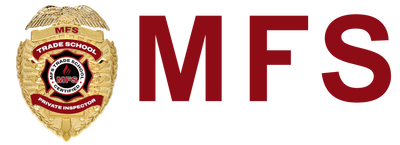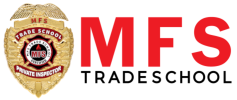What is NFPA 96? A Comprehensive Overview

In the heart of every bustling restaurant lies a complex system of cooking equipment, ventilation, and fire protection measures. These elements work together to create culinary masterpieces while ensuring the safety of both staff and patrons.
Enter NFPA 96—a comprehensive standard developed by the National Fire Protection Association to address the unique fire risks associated with commercial cooking operations. This standard serves as a beacon of safety, guiding restaurant owners, managers, and staff through the intricacies of maintaining a secure and compliant kitchen environment.
From high-volume establishments to seasonal eateries, NFPA 96 applies to all commercial cooking operations, emphasizing the importance of proper ventilation control, exhaust systems, and grease management. As technology evolves and new cooking techniques emerge, this standard remains a living document, continuously revised to accommodate the ever-changing landscape of the culinary world.
Definition and Purpose of NFPA 96
NFPA 96, the Standard for Ventilation Control and Fire Protection of Commercial Cooking Operations, is a comprehensive set of guidelines and requirements designed to mitigate fire hazards in commercial kitchens. Developed and maintained by the National Fire Protection Association (NFPA), this standard serves as the go-to resource for restaurant owners, managers, and staff seeking to create a safe and compliant cooking environment.
The purpose of NFPA 96 is twofold: to establish minimum fire safety requirements for the design, installation, operation, inspection, and maintenance of cooking equipment and to provide a framework for the ventilation control and fire protection systems necessary to prevent kitchen fires. For more details, visit our NFPA Code 96 FAQs.
NFPA 96 applies to a wide range of commercial cooking operations, from high-volume restaurants and fast-food chains to seasonal businesses like food trucks and concession stands. The standard recognizes that each type of cooking operation presents unique challenges and fire risks, and thus provides specific requirements tailored to different equipment and cooking methods.
As the culinary landscape evolves, so too does NFPA 96. The standard undergoes regular revisions to accommodate advancements in cooking technology, new fire suppression systems, and emerging safety concerns. This ensures that commercial kitchens can maintain the highest level of fire safety while embracing innovation and creativity in their cooking practices.
Key Components of NFPA 96
Ventilation Control
Effective ventilation management is essential for maintaining safety in commercial kitchens. Systems like whole-house ventilation systems must efficiently circulate air to mitigate heat and eliminate hazardous particles that can accumulate. Ducts require thoughtful engineering to facilitate easy cleaning, thereby minimizing the risk of grease accumulation—a common fire hazard. The design must accommodate the kitchen's specific operational needs, ensuring comprehensive coverage and optimal performance, as seen in systems like the Fresh Air Ventilation Control by Field Controls.
Exhaust Systems
Exhaust systems function as the kitchen's defense mechanism against airborne grease. By swiftly capturing and channeling vaporized grease away from cooking surfaces, they prevent the formation of potentially dangerous deposits. Incorporating certified grease removal devices, such as hoods equipped with specific filters, these systems are designed to meet rigorous safety criteria, similar to Healthy Climate® ventilation systems by Lennox. Regular maintenance and inspections are crucial to ensure these systems operate without obstruction, thereby safeguarding the kitchen from potential damage.
Grease Filters
Grease filters serve as a critical line of protection in commercial kitchens, effectively intercepting grease particles before they infiltrate ventilation pathways. In busy kitchens, where grease accumulation can be substantial, filters must undergo frequent maintenance to prevent obstruction. Malfunctioning filters can impede airflow, increasing the risk of fire and compromising overall system efficiency. By adhering to specified maintenance schedules, kitchens can maintain optimal safety and operational standards.
NFPA 96 Compliance for Different Cooking Operations
High-Volume Cooking
In bustling kitchen environments, where the scale of operations is significant, maintaining compliance with NFPA 96 is paramount. These busy settings generate considerable amounts of grease-laden vapors, which can quickly accumulate, posing a serious risk if not addressed. Implementing a stringent maintenance schedule becomes essential—neglecting this practice can lead to increased fire risk. Through consistent cleaning and diligent upkeep, high-volume kitchens can safeguard their operations and maintain a secure working environment. Enrolling in an online kitchen exhaust hood cleaning course can help ensure compliance with NFPA 96 standards.
Solid Fuel Cooking
Cooking with solid fuels like wood pellets or charcoal introduces distinct challenges due to the production of heavy smoke and potentially hazardous compounds. Exhaust systems require advanced grease removal devices to effectively capture these byproducts, ensuring the environment remains safe and compliant. Such systems not only enhance air quality but also form a critical part of fire prevention strategies. Given the combustible nature of the materials involved, a sophisticated approach to both ventilation and fire protection is crucial. By adopting appropriate technologies and practices, kitchens that utilize solid fuels can operate efficiently without compromising safety.
Specialized Techniques
Cooking methods that involve unique approaches, such as wok cooking, demand compliance measures tailored to their specific requirements. The intense heat associated with wok cooking necessitates specialized ventilation systems capable of managing vaporized emissions effectively. These configurations are vital for adherence to NFPA standards, as they prevent the buildup of flammable residues that pose significant fire hazards. By customizing ventilation solutions to cater to these unique cooking methods, kitchens can maintain high safety standards while still fostering creativity in their culinary ventures. This approach ensures that operations remain both innovative and secure.
Consequences of Non-Compliance
Ignoring NFPA 96 standards can lead to serious repercussions for commercial kitchen operations, extending beyond immediate safety concerns. Failure to comply invites a range of legal challenges, including penalties from regulatory authorities for failing to uphold public safety standards. These penalties can be hefty, reflecting the gravity of neglecting crucial safety protocols meant to protect personnel and guests.
Additionally, the financial burden extends to insurance considerations. Insurance providers reassess risk levels for non-compliant businesses, often resulting in higher premiums. This reassessment places a financial strain on operations, affecting overall profitability and potentially leading to budgetary constraints that can impact other areas of the business.
Operational disruptions and property damage are significant risks associated with non-compliance, as highlighted in the CDC guide on improving home ventilation. Kitchen fires can cause extensive damage, leading to costly repairs and prolonged downtime. This not only affects revenue streams but also damages the establishment's reputation, as customers may question the safety and reliability of the venue. The reputational damage can have lasting effects, influencing future business prospects as patrons may seek safer dining alternatives.
The choice to employ non-certified hood cleaners further compounds these risks. Consider online exhaust hood cleaning coaching to ensure proper training and certification.
The Critical Role of Professional Kitchen Exhaust Hood Cleaning Services
Professional kitchen exhaust hood cleaning services are pivotal in ensuring the operational safety of commercial kitchens. These specialists are equipped with the expertise to navigate the complex requirements set forth by NFPA 96, ensuring that all safety protocols are meticulously followed. For those interested in learning these skills, hands-on kitchen exhaust hood cleaning training is available.
By integrating industry-specific methods, these professionals ensure that exhaust systems function optimally, thereby enhancing kitchen safety and reducing the likelihood of fire hazards. Learn more about preparing your kitchen for professional hood cleaning to maximize safety and efficiency.
Engaging professional cleaning services regularly is vital for ensuring adherence to NFPA 96 standards. This ongoing maintenance is crucial for upholding a secure work environment, safeguarding the equipment, and protecting the safety of all kitchen personnel. By relying on certified professionals, businesses can concentrate on their culinary operations with peace of mind, knowing that their safety measures are managed by seasoned experts.






